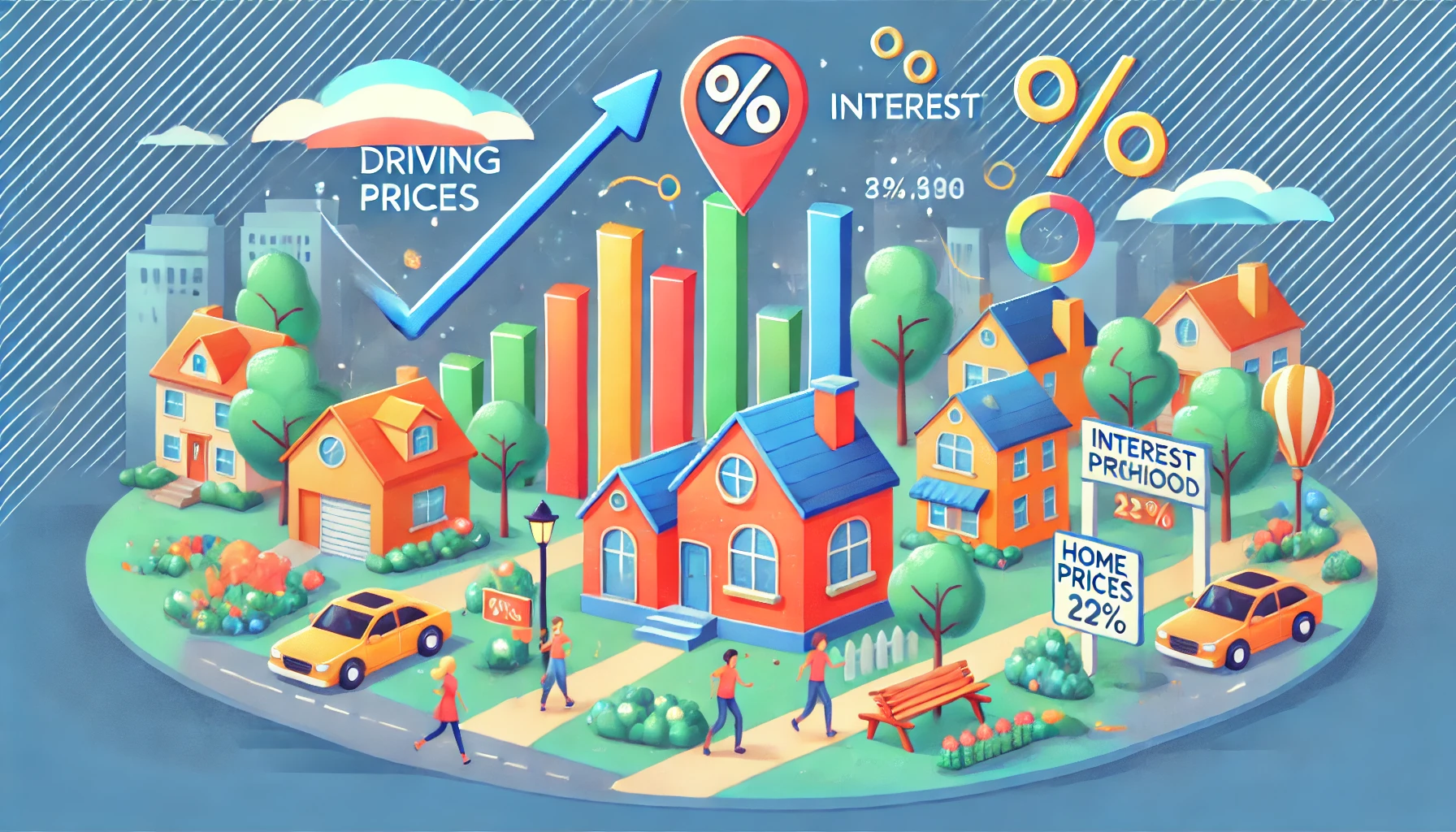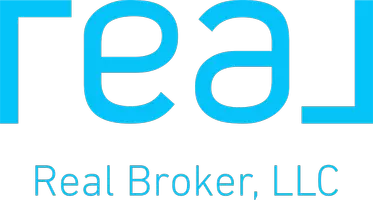Blog > What’s Driving Home Prices and How to Get the Best Deal
 In today’s competitive real estate market, understanding the factors influencing home prices is key to making a smart investment. Whether you’re a first-time buyer or looking to upgrade, knowing what drives prices up or down can help you time your purchase and find the best deal possible. In this post, we'll dive into the main drivers of home prices, how interest rates impact your buying power, and highlight some of the best neighborhoods to consider buying in right now.
In today’s competitive real estate market, understanding the factors influencing home prices is key to making a smart investment. Whether you’re a first-time buyer or looking to upgrade, knowing what drives prices up or down can help you time your purchase and find the best deal possible. In this post, we'll dive into the main drivers of home prices, how interest rates impact your buying power, and highlight some of the best neighborhoods to consider buying in right now.
What’s Driving Home Prices?
Several factors influence home prices, but three main trends are shaping the current market:
-
Supply and Demand Imbalance: The real estate market, much like any other, is driven by the basic economic principle of supply and demand. In many areas, the demand for homes significantly outweighs the available supply, which naturally pushes prices upward. Several key reasons contribute to this imbalance:
- Low Inventory: Many cities are facing a housing shortage, with fewer homes available for sale. This shortage has been exacerbated by delayed construction and fewer homeowners selling their homes. In some cases, those who refinanced their homes at low-interest rates during the pandemic are hesitant to sell now, keeping inventory tight.
- Increased Demand: Remote work has also contributed to an increase in demand as more people are looking to buy homes in suburban or rural areas, rather than renting in city centers. This surge has driven prices up, particularly in regions that offer a high quality of life, good schools, and strong local economies.
-
Rising Construction Costs: The price of raw materials like lumber, steel, and concrete has surged in the past few years, increasing the cost of building new homes. Labor shortages in construction have also led to higher wages, contributing to the final price of new builds. This has made newly constructed homes more expensive, which has a ripple effect on the prices of older homes.
-
Inflation and Economic Factors: Inflation, coupled with other economic factors, has had a direct impact on the cost of living, and by extension, home prices. High inflation leads to higher costs for everything, from the materials used in home construction to the price of borrowing money. In periods of inflation, people also look to real estate as a relatively safe investment, which can drive up demand.
-
Interest Rates: Mortgage interest rates, set by the Federal Reserve, have a direct impact on the affordability of homes. When rates are low, buyers can afford higher-priced homes because their monthly payments will still be within budget. However, as interest rates rise, buyers' purchasing power decreases, often leading to softer home prices as fewer people can afford to buy.
Interest Rates and Buying Power
Interest rates are one of the most critical factors when it comes to buying a home. Simply put, the lower the interest rate, the more house you can afford. When mortgage rates drop, homebuyers find themselves with more purchasing power because their monthly mortgage payments will be lower. Conversely, when interest rates rise, buying power decreases, as a higher percentage of your monthly payment goes toward interest rather than the principal balance.
For example, let’s say you’re considering a 30-year fixed mortgage for a home priced at $500,000:
- At 3% interest, your monthly mortgage payment (principal and interest) might be around $2,100.
- At 5% interest, that same mortgage payment would increase to about $2,680—nearly $580 more each month!
This difference is significant and can limit the price range for buyers in a market with rising rates. Therefore, timing your home purchase when rates are lower can greatly affect how much home you can afford.
The Best Neighborhoods to Buy Right Now
Choosing the right neighborhood is just as important as the price of the home. When looking for the best deals, it’s crucial to find areas that balance affordability with potential growth. Here are some of the best neighborhoods to consider:
-
Carmel Valley
A family-friendly neighborhood with great schools and proximity to beaches, Carmel Valley is one of San Diego’s more upscale neighborhoods. Despite the rising prices, this area offers long-term value with its strong school districts and high quality of life. While the homes here may be on the pricier side, the area’s amenities and continued demand make it a solid investment. -
Rancho Bernardo
Known for its mix of older, more affordable homes and newer developments, Rancho Bernardo offers something for every type of buyer. With highly-rated schools, numerous parks, and a close-knit community feel, this area is perfect for families. Property values here have appreciated steadily, and there are still deals to be found, especially for buyers willing to purchase older homes and renovate. -
Scripps Ranch
For those seeking a strong community vibe with lots of recreational activities, Scripps Ranch is an ideal choice. This area has seen significant development in recent years, making it one of the more desirable places to live. There are still affordable options for buyers who want proximity to both nature and the city. -
Otay Ranch
For buyers looking for an up-and-coming neighborhood, Otay Ranch in Chula Vista is a fantastic option. It offers a range of housing types, from condos to large family homes, and has seen rapid growth in recent years. With a vibrant community, affordable housing, and excellent infrastructure, Otay Ranch is a neighborhood to keep an eye on. -
La Mesa
Situated east of San Diego, La Mesa is a more affordable option compared to coastal neighborhoods. With a charming downtown area, excellent parks, and growing arts scene, La Mesa is attracting more young families and professionals. Home prices are still lower compared to other parts of San Diego, making it a great option for those looking for value.
How to Get the Best Deal
Even in a competitive market, there are strategies you can use to get the best deal possible on your home:
- Get Pre-Approved: Being pre-approved for a mortgage not only gives you an idea of what you can afford, but it also shows sellers that you’re serious. This can give you an edge in negotiations, especially in a competitive market.
- Be Ready to Move Quickly: Homes in desirable neighborhoods often sell quickly, so it’s essential to be prepared to act fast. Make sure you have your finances in order and are working with a trusted real estate agent who can alert you to new listings immediately.
- Consider Off-Market Listings: Some of the best deals never hit the open market. By working with a well-connected real estate agent, you can find off-market properties that aren’t listed on popular real estate websites, giving you a head start on the competition.
- Look for Fixer-Uppers: If you’re handy or willing to take on a renovation project, buying a fixer-upper can be a great way to get a deal. You can often buy a home below market value and increase its worth through strategic improvements.
Conclusion
The real estate market is dynamic, and several factors—from supply and demand to interest rates and economic conditions—are driving home prices up. However, by understanding these factors and following strategic steps, you can still find the best deal. Whether you’re looking to buy in Carmel Valley or Otay Ranch, having a knowledgeable agent and a clear financial plan will make all the difference.
Ready to Take the Next Step?
GET MORE INFORMATION

Ian Collins, MBA
Team Lead / Agent | CA DRE# 0202209201858943
Team Lead / Agent CA DRE# 0202209201858943

